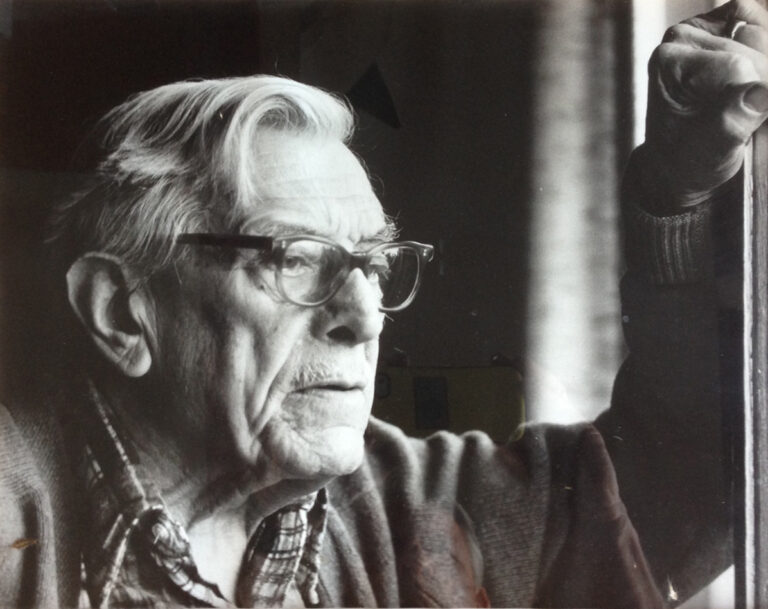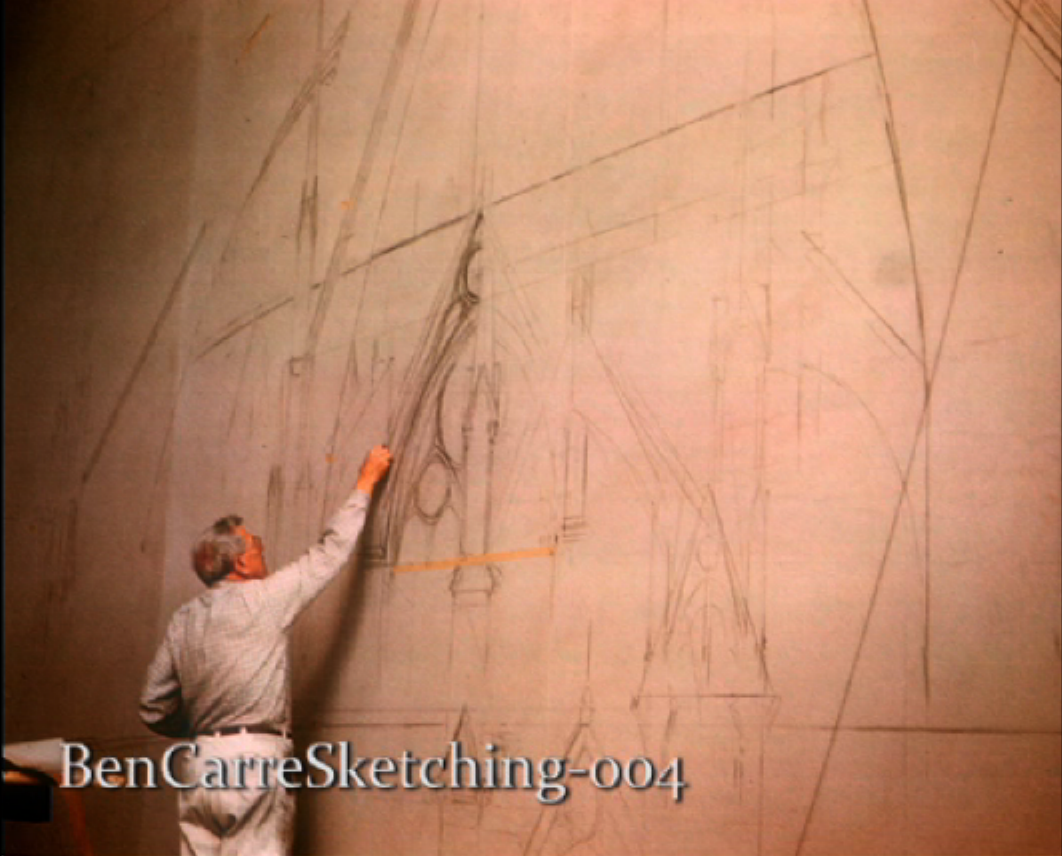Ben Carré
(1883 – 1978)Born in Paris, Ben Carré began his first career designing and painting backdrops and sets for theatre and then for film, in Paris, then in Fort Lee, New Jersey, and finally in Hollywood. Carré is considered the first true visual artist of American cinema. As an art director, he was the first to paint his sets in color, the first to film with a synchronized musical score in Don Juan (1926), and the first to film with spoken dialogue in The Jazz Singer (1927). His work includes such memorable films as The Pride of the Clan (1917) and The Poor Little Rich Girl (1917), both starring Mary Pickford, The Phantom of the Opera (1925), and the Marx Brothers’ A Night at the Opera (1935).
In 1937 Carré began designing backdrops at MGM. He spent the last half of his career as the perspective expert of the MGM Scenic Art Department, creating architectural drawings with an accuracy that deceived audiences into believing what they saw was real. Memorable films demonstrating Carré’s preternatural drawing skills include Marie Antoinette (1938), Meet Me in St. Louis (1944), National Velvet (1944), An American in Paris (1951), Young Bess (1953), and Singin’ in the Rain (1952). He also created such memorable images as the Emerald City in The Wizard of Oz (1939) and Mount Rushmore in North by Northwest (1959).
Carré, Anne. Ca. 1989. The Glory Years. Unpublished manuscript. Margaret Herrick Library, Academy of Motion Picture Arts and Sciences, Beverly Hills, California., Isackes, Richard M., Maness, Karen L. 2016. The Art of the Hollywood Backdrop, ReganArts

Ben Carré

Ben Carré laying out the architectural drawing for The Four Horsemen of the Apocalypse (1962), MGM Scenic Art Department
Mark Morris Collection